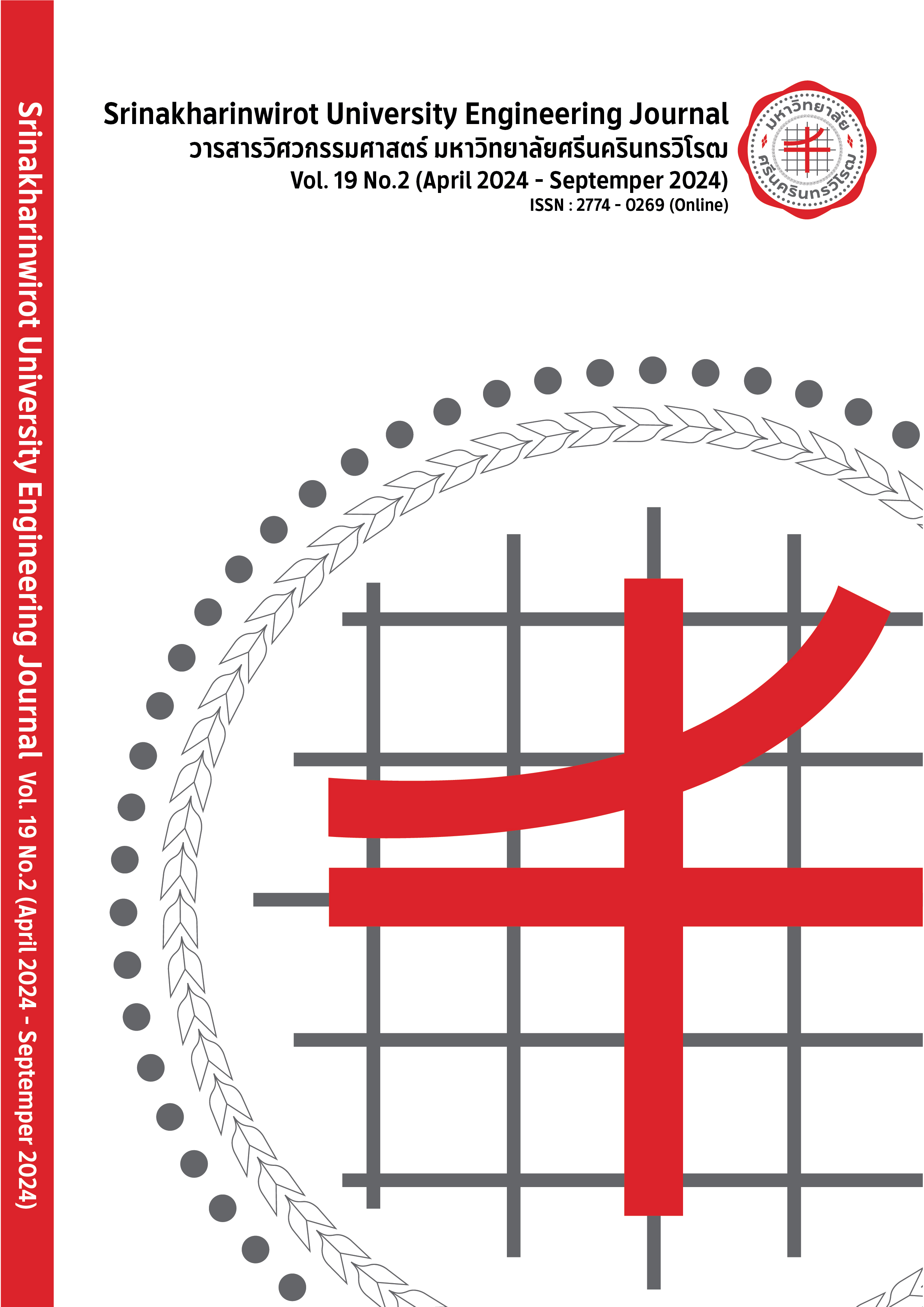The Study of Thermal Efficiency of hot-pot
Main Article Content
Abstract
This study is a thermal study of a hot pot, a household equipment for cooking and widely used for a long time. This research study used a size 22 hot pot with 3 different shapes and sizes of air flow that can be commonly seen. Experiments were conducted using the Water Boiling Test (WBT) method, using solid alcohol as fuel. It was found that type 1 hot pot has an overall air flow cross-sectional area of 36.41 cm2 with maximum average thermal efficiency of 40.22%, type 2 hot pot has an overall air flow cross-sectional area of 27.43 cm2 with maximum average thermal efficiency of 35.28% and type 3 hot pot has an overall air flow cross-sectional area of 35.61 cm2 with maximum average thermal efficiency of 30.50%, respectively. This research study shows that the different shapes and sizes of the air flow cross-sectional area are factors that cause significant differences in thermal efficiency.
Article Details

This work is licensed under a Creative Commons Attribution-NonCommercial-NoDerivatives 4.0 International License.
Copyright belongs to Srinakharinwirot University Engineering Journal
References
M. Yu, T. Li, S. Wan, H. Song, Y. Zhang, A. Raza, C. Wang, H. Wang and H. Wang, “Study of aroma generation pattern during boiling of hot pot seasoning,” Journal of Food Composition and Analysis, vol.114, pp.104844, 2022.
B. Wang, W. Wu, J. Liu, O. P. Soladoye, C. Ho, Y. Zhang, Y. Fu, “Flavor mystery of spicy hot pot base: Chemical understanding of pungent, numbing, umami and fragrant characteristics,” Trends in Food Science & Technology, vol.139, pp.104137, 2023.
The Water Boiling Test Version 4.1.2, Cookstove Emissions and Efficiency in a Controlled Laboratory Setting, 2014.
F. Lombardi, F. Riva and E. Colombo, Guidelines for reporting and analysing laboratory test results for biomass cooking stoves. Version 1.0, 2017.
Y. Chean, G. Shen, S. Su, W. Du, Y. Huangfu, G. Liu, X. Wang, B. Xing, B, S, K.R, Tao, S. “Efficiencies and pollutant emissions from forced - draft biomass-pellet semi - gasifier stoves: Comparison of International and Chinese water boiling test protocols,” Energy for Sustainable Development, vol.32, pp.22-30, 2016.
Y. Chen, G. Shen, S. Su, W. Du, Y. Huangfu, G. Liu, X. Wang, B. Xing, K. R. Smith and S Tao, “Efficiencies and pollutant emissions from forced-draft biomass-pellet semi-gasifier stoves: Comparison of International and Chinese water boiling test protocols,” Energy for Sustainable Development, vol.32, pp.22-30, 2016.
T. Chaichana, M. Ali and M. Longsaman, “The Study of Thermal Efficiency of Household Cooking Stove,” Journal of Science and Technology Mahasarakham University, vol. 32, no.5, pp.626-630, 2013.
S. Wunsri, N. Podkumnerd and P. Sampim, “Development of Energy–Efficient Biomass Stove for Kanom Cung Num Dung Sticky Rice Processing in Bang Riang Community, Khuan Niang District, Songkhla Province,” Journal of Research Unit on Science, Technology and Environment for Learning, vol. 12, no.1, pp.66-76, 2021.
S. Kaewluan, D. janthosee, S. Jansri and W. Piyarat, “Performance Testing of the 20 kW Biomass Gas Stove,” Srinakharinwirot University Engineering Journal, vol. 8, no. 1, pp. 24-33, 2013.
J. Rukijkanpanich and J. Sophonarunrat, “Biomass Pellets From Sugarcane Filter Cake And Bagasse For Household Charcoal Stove,” Engineering Journal of Research and Development, vol. 33, no. 2, pp.103-119, 2022.
Thai Industrial Standards Institute (TISI), Solid Alcohol Fuel TISI 950-2003.


